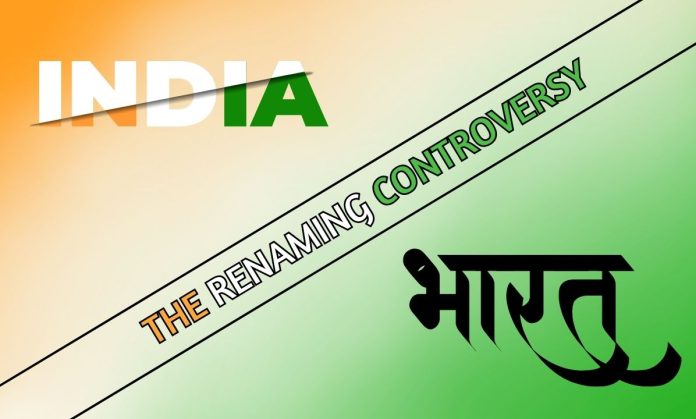Indian President Droupadi Murmu stirred controversy when she sent out dinner invitations to foreign leaders attending the G20 summit in New Delhi on September 9th. The invitation addressed her as the “president of Bharat,” the traditional name for India. Furthermore, a booklet in English given to foreign delegates at the G20 summit, titled “Bharat, the Mother of Democracy,” declared that “Bharat is the official name of the country.” Officials representing India at the G20 summit will now wear tags that read “Bharat – official.” The situation was further fueled by an official document referring to Mr. Modi as the “prime minister of Bharat,” sparking rumours that the country might undergo a name change.
Additionally, the government has scheduled a five-day special session of parliament later this month. During this session, they plan to propose a special resolution to prioritize the use of the name Bharat. The Special Session of Parliament will convene from September 18th to September 22nd, and it is expected to address this resolution.
However, it is important to note that this development follows closely on the heels of opposition leaders in the country coming together forming a coalition named “INDIA,” which stands for Indian National Developmental Inclusive Alliance. Their goal is to challenge Mr. Modi’s Bharatiya Janata Party (BJP) in the upcoming elections next year. The opposition alliance seeks to protect India and its principles of democracy from a government that looks to be promoting a Hindu majority agenda that could potentially harm religious minorities, including over 200 million Muslims.
Furthermore, the Modi government wishes to rename India Bharat because it is concerned that the present name would be confused with this political party called ‘INDIA.’ To effect this change, the administration has introduced a special motion in parliament to consider switching from “India” to “Bharat.”
Leaders from the right-wing BJP party claim that “India” was introduced by British colonial rulers and view it as a “symbol of slavery.” They believe that renaming the country is a step toward reconnecting with its Hindu history. In recent weeks, some of Mr. Modi’s ministers have changed their social media bios, replacing “India” with “Bharat.”
The official name for the country is stated as “India, that is Bharat,” and it’s characterised as a union of states in the Indian Constitution drafted and made public in 1951. But the matter was also extensively debated after India achieved independence in 1947. Although the country of almost 1.4 billion people has two official names, India and Bharat, the former is the more generally used one, both within the country and internationally. After decades of being known as India, the Modi government is apparently still campaigning for a name change.
Shashi Tharoor tweeted his thoughts on X where he mentioned that there is no constitutional issue with using ‘Bharat,’ one of the country’s official names. However, he hopes the government won’t make the mistake of abandoning ‘India,’ which has gained immense brand value over centuries.
However, changing the country’s name is not just peanuts like replacing signs. It needs consent from both houses of the Indian parliament and adjustments to Article 1 and Article 77, including their subclauses (1) and (3), which define the use of “India” in official situations.
The cultural significance of Bharat has always been evident, and the present buzz is about promoting its use alongside India. According to this perspective, India is seen as a foreign imposition and unfit for national dignity. Bharat, with its ancient linkage, stretches beyond the modern geographical and cultural boundaries of the Indian Republic. Both names reflect the journey of India’s nation-building. Attempting to segregate the foreign from the native in a country with various ethnic, linguistic, and genetic histories moulded over millennia by migrations and human interactions would only pave way for unneeded societal conflicts.
































